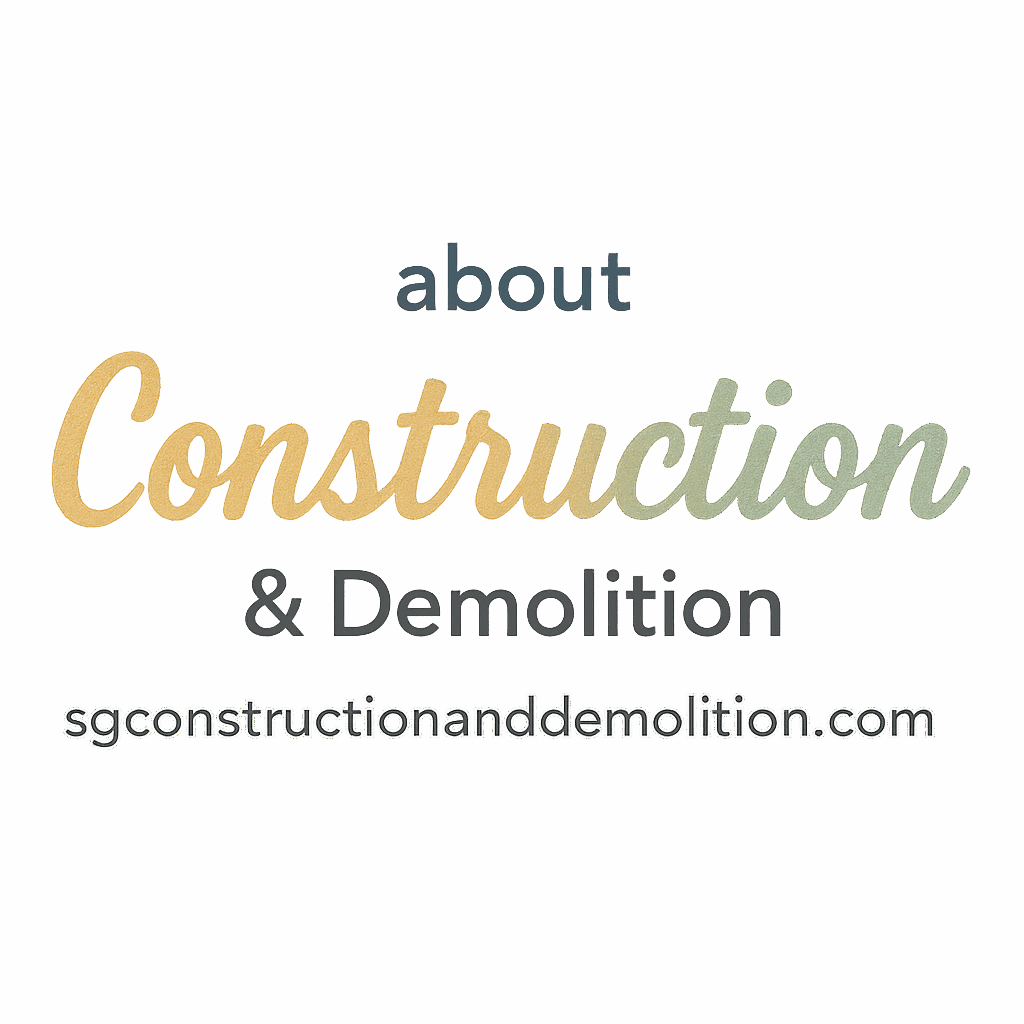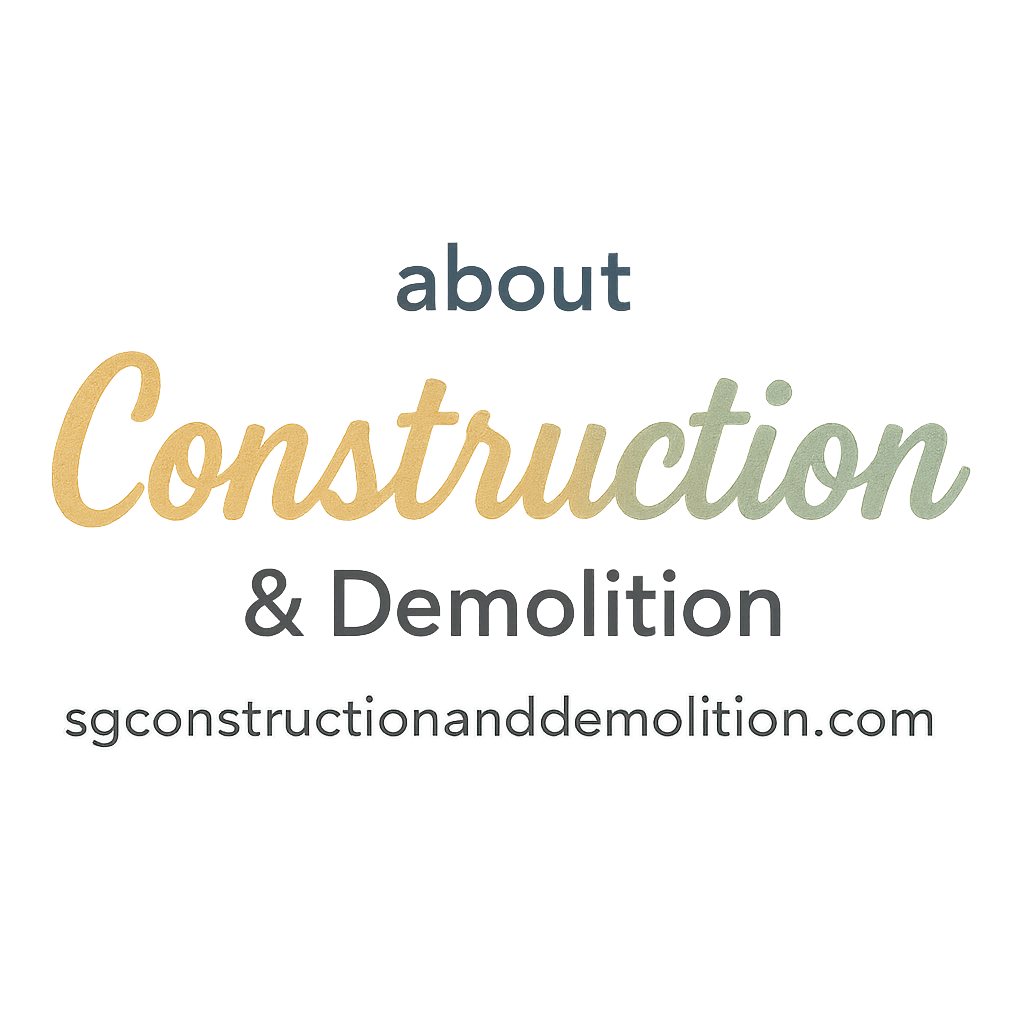Introduction: What is a Demolition Project?
Demolition isn’t just about tearing down a building with brute force. It’s a carefully choreographed process, full of planning, safety measures, and strategic execution. Whether you’re clearing land for new construction or removing unsafe structures, understanding the 5 stages of a construction demolition project is crucial for both safety and success.
Why Understanding the Demolition Stages Matters
Just like construction, demolition follows a specific order. Each stage plays a key role in the overall project. Skipping a step or doing it out of order can cause safety hazards, delays, or even legal issues. Plus, if you’re working in urban areas or tight spaces, every move must be intentional.
Want to avoid costly mistakes and streamline your demolition work? Then read on.
Stage 1: Project Planning & Safety Preparation
Evaluating the Site & Setting Goals
Before a single tool is lifted, the first step is to assess the building and environment. What materials were used in construction? Are there hazardous materials like asbestos or lead paint? Is the building structurally unstable?
This is where the foundation for the entire demolition project is laid.
Explore more on Construction Basics to learn how site evaluations are performed for both new builds and demolitions.
Risk Assessments and Safety Protocols
Safety is non-negotiable. This includes everything from PPE (Personal Protective Equipment) to establishing emergency procedures. Risk assessments must be documented to identify potential hazards such as unstable structures, dust, falling debris, or hazardous chemicals.
For full safety protocols and planning tips, check out Planning & Safety.
Getting the Right Permits
Demolition isn’t something you can just start without paperwork. Depending on local regulations, you’ll need environmental clearances, city permits, and even historical preservation approvals in some cases.
Make sure you’ve crossed every “T” before you start knocking down walls.
Important Planning Resources
Need help getting started with project planning?
- Check out Steps to Planning Construction Projects
- Explore Project Management Tips for smooth execution
Stage 2: Site Preparation and Utility Disconnection
Disconnecting Utilities Safely
Before demolition begins, all utilities (gas, water, electricity, sewer, internet) must be professionally disconnected to prevent hazards. Failing to do this is a recipe for disaster—think explosions or flooding.
Explore more on Electric Tools and Hazards for insight into handling energy-related risks.
Securing the Area
Fencing, signage, and barriers must be put in place. Unauthorized entry should be prevented at all costs. It protects both the crew and the public.
Demolition areas can be dangerous zones. Setting up “No Trespassing” signs and physical boundaries is essential.
Equipment Checklist
Here are just a few of the must-have tools before starting demolition:
- Hydraulic excavators
- Jackhammers
- Wrecking balls
- Safety gear
- Scaffolding
See the full list of tools on our Tools & Equipment page and related equipment articles.
Stage 3: Structural Deconstruction and Demolition
Choosing the Right Demolition Method
No two demolitions are alike. You’ll need to select a method that fits the building’s size, material, and surroundings.
Manual Demolition vs. Mechanical Demolition
Manual demolition uses handheld tools and is often used for small projects or parts of a building that require careful removal.
Mechanical demolition, on the other hand, uses heavy machinery to tear down structures quickly.
Explosive Demolition
This technique uses explosives to bring down large buildings in a controlled manner. It’s efficient but requires detailed calculations and permits.
Explore more about Demolition Techniques and learn how each method applies in different scenarios.
Using the Right Tools and Equipment
Demolition is only as efficient as the tools you use. From power tools to heavy-duty machinery, the right gear can make or break your project.
Read more about Power Tools and which ones are best for specific demolition phases.

Stage 4: Debris Removal and Site Cleanup
Sorting and Recycling Materials
Not everything from a demolished site is junk. Bricks, metal, concrete, and wood can often be salvaged and reused.
Recycling isn’t just eco-friendly—it saves you disposal costs and boosts sustainability. Dive into our Green & Smart Trends to learn more.
Waste Disposal Best Practices
Local regulations often dictate how debris must be disposed of. Failing to follow them can result in fines or legal issues.
Pro tip: Separate hazardous waste early and partner with certified recycling companies.
Stage 5: Final Inspection and Post-Demolition Planning
Ensuring Regulatory Compliance
After demolition, the site must be inspected by local authorities or project managers. They’ll ensure everything was done according to code and that the site is safe for future use.
You might also need soil tests, air quality checks, and water drainage assessments depending on your next steps.
What Happens Next?
Once demolition is complete and the site is clear, construction or landscaping can begin. Or, in some cases, the site might be sold or left undeveloped.
Need ideas for what comes after demolition? See our insights on Construction Trends.
Common Myths About Demolition Projects
Let’s clear up a few misconceptions:
- Myth: Demolition is quick and easy.
Truth: It takes weeks or months of planning. - Myth: It’s all about brute force.
Truth: Precision and technique matter just as much.
Explore more about myths and false assumptions in our Misconceptions and Myths sections.
Green Trends in Demolition: What’s Changing?
Eco-friendly demolition is on the rise. Here’s how the industry is evolving:
- Emphasis on material reuse and recycling
- Use of smart tech and robotics
- Less dust and noise through water spraying systems
- Integration of Smart Technologies in site monitoring
Stay on top of Innovation and build with a cleaner footprint.
Conclusion
The 5 stages of a construction demolition project aren’t just steps—they’re the pillars of a safe, efficient, and professional job. From planning and safety to cleanup and inspection, each phase ensures the project’s success and prepares the site for its next chapter.
If you’re just getting started, don’t worry. Check out our Beginner’s Guide for even more tips and tricks.
FAQs
1. What is the most important stage of a demolition project?
Planning and safety preparation. Without it, every other stage becomes riskier and more complicated.
2. Do I need a permit for demolition?
Yes, most cities require permits before demolition can begin. Check with your local building authority.
3. Can I recycle materials after demolition?
Absolutely! Metal, concrete, brick, and even wood can often be reused.
4. How long does a demolition project take?
Anywhere from a few days to several weeks, depending on the size and complexity of the structure.
5. What equipment is used in mechanical demolition?
Excavators, bulldozers, wrecking balls, and hydraulic crushers are commonly used.
6. Is explosive demolition safe?
When performed by licensed professionals with proper permits, it is highly controlled and safe.
7. What happens after demolition is complete?
The site is cleaned, inspected, and prepped for new construction, landscaping, or sale.


